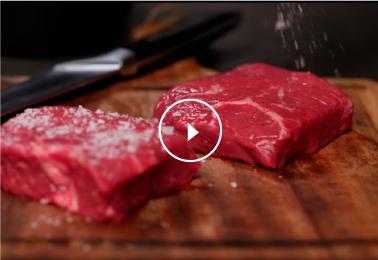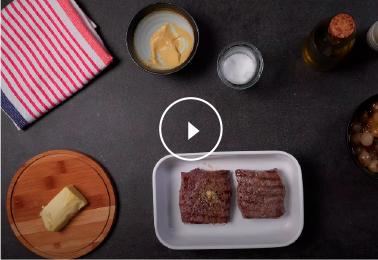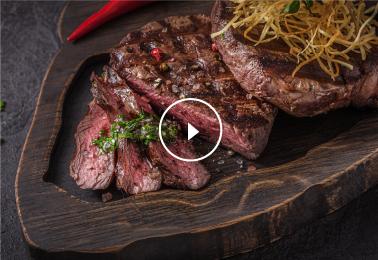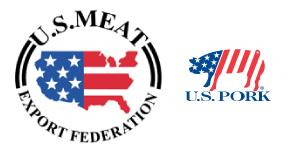Useful Tips
Lorem ipsum dolor sit amet, consectetuer adipiscing elit, sed diam nonummy nibh euismod tincidunt ut laoreet dolore magna aliquam erat volutpat. Ut wisi enim ad minim veniam, quis nostrud exerci tation ullamcorper suscipit lobortis nisl ut aliquip ex ea commodo consequat. Duis autem vel eum iriure dolor in hendrerit in vulputate velit esse molestie consequat, vel illum dolore eu feugiat nulla facilisis at vero eros et accumsan et iusto odio dignissim qui blandit praesent luptatum zzril delenit augue duis dolore te feugait nulla facilisi.
Think versatility
Beef is a cornerstone of the American menu that’s always in demand. And today’s beef gives you more ways to meet that demand than ever.
- Beef is a great fit for the latest menu trends and most popular cuisines, from Latin, Mediterranean and Asian to regional American. It adds steak satisfaction, perceived value and selling power like no other protein can.
- Look at items on your menu currently made with other proteins—like Chicken Caesar— and consider offering a steak upgrade, which can command a higher menu price without significantly increasing food or labor costs.
- If you serve patrons with varying budgets, be sure to menu beef items at a range of prices, so you’re offering something for everyone.
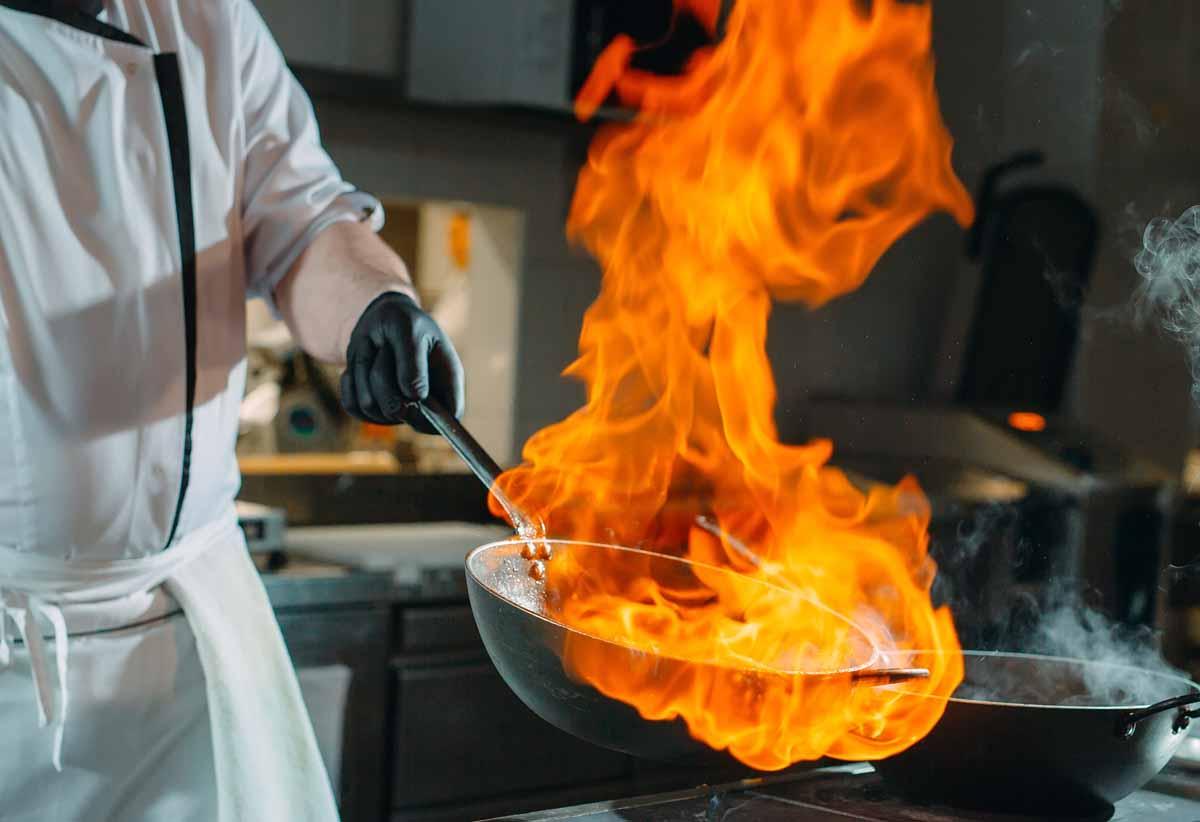
Stretch your beef Euro
There’s a simple secret to delivering steak sizzle at any price point. Think beyond the center of the plate. A little beef adds big impact anywhere on the menu. A few slices of juicy grilled steak—including economical “extras” like tenderloin tips—can be the star ingredient in a profitable pasta or salad. And a few ounces of steak are all it takes to create a deluxe sandwich, small plate or starter. The bottom line: nothing adds instant “crave-appeal” like beef.
- Use rubs and marinades to create big-ticket signature steak presentations at pennies per portion.
- Slice and fan steak, then drizzle with olive oil or an on-trend sauce or salsa; or garnish with greens, herbs or vegetable “confetti.” You’ll get great plate plate coverage and enhanced appetite appeal.
- Make the most of economical cuts like Short Ribs, Top Round and Brisket to create braised, stewed and slow-cooked comfort food classics.
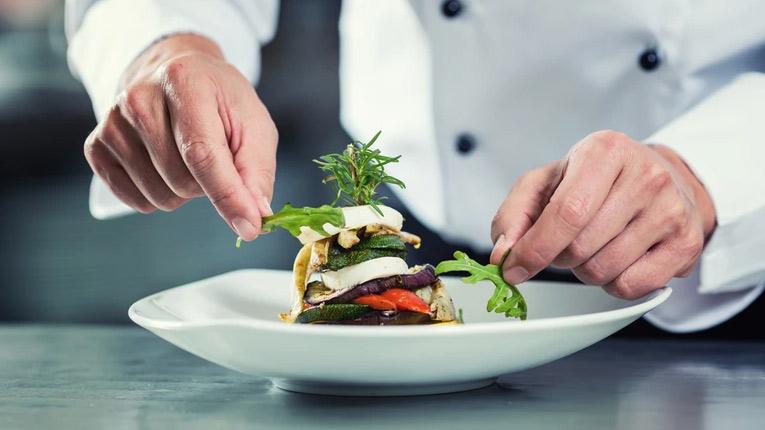
Tap into new cuts for new profits
Industry research has identified several tender and flavorful cuts from the Beef Chuck and Round that cook and eat like cuts from the Rib and Loin. Ask your purveyor about these outstanding options:
PETITE TENDER: Upscale presentation, like Tenderloin; serve as small roast or medallions.
FLAT IRON STEAK: Flavorful, juicy, well-marbled; serve just like a Strip or Ribeye Steak; great for sandwiches and salads.
RANCH STEAK: Similar flavor and texture to Top Sirloin; great for breakfast, lunch or dinner in combo plates, steak salads, sandwiches and more.
DENVER STEAK: A juicy, well-marbled cost-effective alternative to Strip Steak; serve as a steak, or slice for stir-fries, fajitas and skewers.
DELMONICO STEAK: Flavor and texture similar to Ribeye Steak; serve as a steak or tie and present tournedos-style.
BONELESS COUNTRY-STYLE BEEF RIBS: The rich flavor of beef short ribs with the convenience of boneless beef; ideal in starters, small plates, sandwiches and entrees.
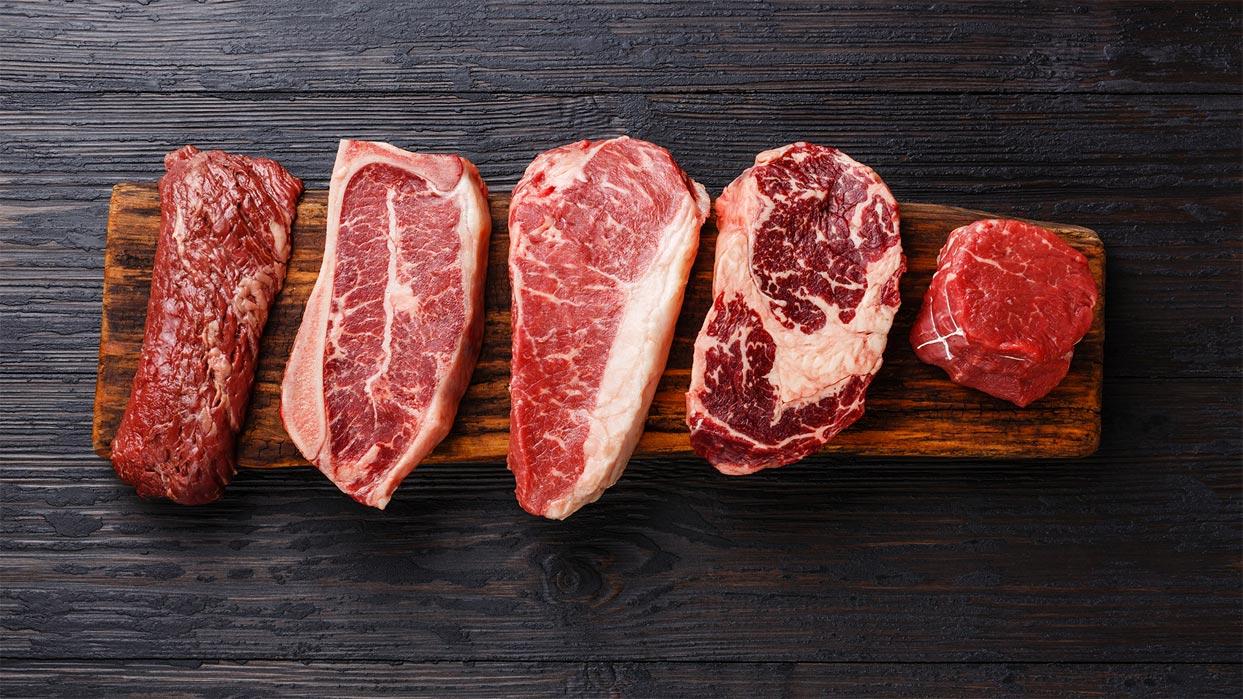
Give beef lovers "nutrition permission"
Even though beef has a great nutrition story to tell, some diners still need a little permission to order it. In fact, 2 in 3 consumers say that when ordering a meal in a restaurant, it’s extremely or very important that they feel good about eating the dish and it’s (almost) equally important that it have an ideal balance of good taste and nutrition.
The good news: there are 29 cuts of beef that meet government labeling guidelines for lean and among them are some of the most popular foodservice cuts. Feature them on your menu, and you can give your guests all the reassurance they need. Use these cuts to create lighter options, such as salads, small plates and petite steaks.
Fight off chicken boredom. Did you know that each of the 29 lean beef cuts have a total fat content that falls between a skinless chicken breast and a skinless chicken thigh when comparing cooked 3-ounce servings? Pair beef with other healthful foods, such as vegetables, whole grains and even fruit to help patrons see beef as part of a balanced, nutritious way of eating.

Know the score about beef grading and aging
The price of a beef cut varies according to quality grade (i.e., USDA Prime, Choice, Select) and yield grade. Be sure you are comparing the same quality and yield grade when pricing beef cuts.
A cut’s quality grade is based on marbling, the visible flecks of fat within muscles that affect the flavor and juiciness of cooked beef. Prime, the highest grade, is the most marbled. Beef that has less marbling and less trimmable fat (such as Select grade) should be cooked for shorter periods of time or prepared at lower cooking temperatures than more marbled grades (such as Choice or Prime).
Aging allows the natural enzymes in beef to break down specific proteins in muscle fibers. As this occurs, the meat is tenderized naturally and its flavor is improved. There are two commercial methods for aging beef: wet and dry. Wet aging is far more common and occurs in vacuum bags under refrigerated temperatures of 32oF to 34oF. Dry aging is not as common because it is a more complex method and results in yield losses due to dehydration. It is used primarily by upscale and specialty beef purveyors. Dry-aged beef produces distinct flavors and aromas perceived as too intense by some consumers, yet highly desirable by others.

Serve small plates for big profits
Tap into the appeal of beef with today’s popular, globally-inspired small plates, tapas, bar-food and starters, and you’ll add major profit potential to your menu mix.
Think small: That steak you’re serving center of- the-plate at $20 can be cut into thirds and turned into three sizzling small-plate presentations, priced at $8 to $10 each.
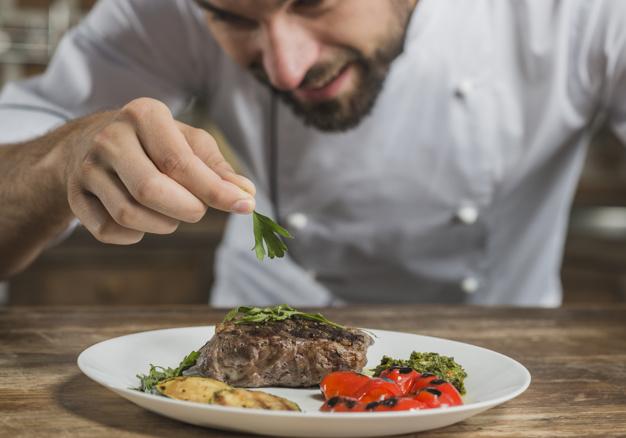
Take beef's flavor over the top
To bring out the best in beef, it helps to know the best ingredients to pair it with. Research shows that many of the most popular ingredients in beef dishes contain naturally occurring, flavor-enhancing umami (oo-MAH-mee) compounds—just as beef does. A 50-50 mixture of two umami compounds can produce eight times as much flavor as either one of the compounds alone. The top 20 ingredients that enhance the flavor of beef:
Onion • Garlic • Tomato* • Oregano • Beef Broth/Stock/Bouillon • Wine (mainly red) • Bay Leaves • Cheese (mainly Parmesan, Cheddar, Blue) • Sugar • Cream • Bell Pepper • Flavored Vinegar • Thyme • Parsley • Cayenne • Mushroom • Soy Sauce • Cumin • Mustard • Ginger
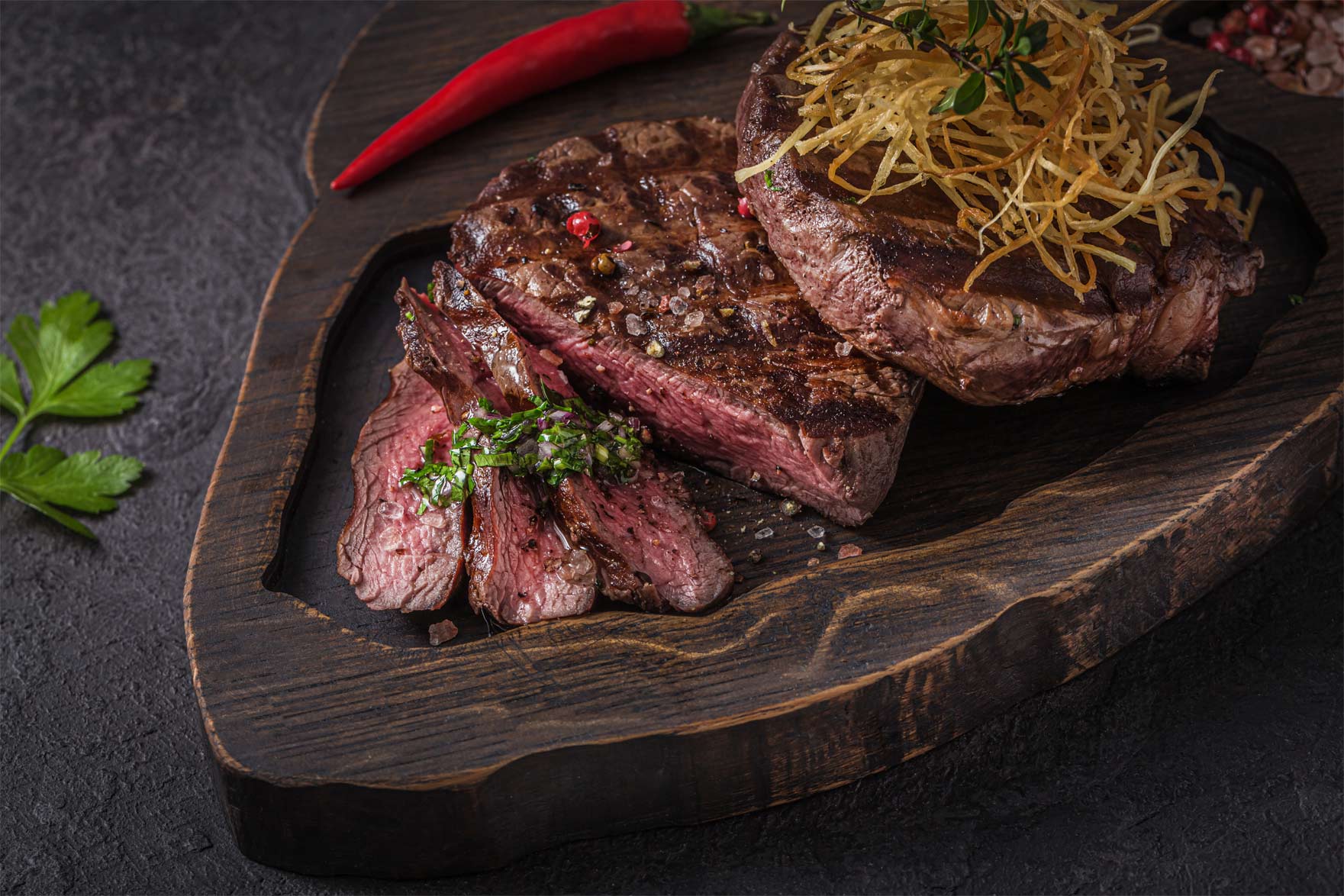
Sell the sizzle
Try these simple, yet powerful merchandising ideas.
- When naming beef dishes, call out intriguing ingredients, e.g., “The Black Truffle Filet,” or “Honey-Pomegranate BBQ Beef Ribs” Test different names for the same dish to see what sells best.
- Run limited-time offers and specials such as steak “flights”—samplers that let patrons try various steaks and sauces.
- Invest in professional food photography to add mouthwatering appeal to menus, menu boards and table tents.
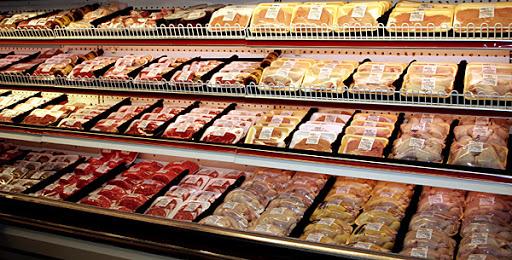
Grilling
If a beefsteak has a thick layer of fat on the outside edges, it should be trimmed off so that only about 1/8″ of fat remains. A little bit of fat around the edges helps to seal in the juices and keeps the edges from drying out when the meat is broiled. The remaining fat layer should be vertically slashed at one inch intervals around the perimeter of the steak to help prevent the meat from curling due to the heat of the broiler.
Beef cuts should be brushed with oil before they are placed on the broiling pan to prevent sticking when they are cooked. Meat that has been marinated in any mixture containing oil can be placed on the pan without additional oiling.
Oven Roasting
Broiling is much like grilling in that food is cooked directly with high heat. The difference between broiling and grilling is that broiling is usually done in an oven and the heat source is above the food (except when pan-broiling) whereas grilling is done on equipment that is generally used outdoors and the heat source is below the food.
Beef for broiling should be tender with adequate marbling and since the goal is to cook the meat quickly,
it should not be too thick.
Before broiling cuts of beef, it is beneficial to remove the meat from refrigeration for a few minutes to warm it slightly, however the meat should not be allowed to remain at room temperature for an extended period. It may be difficult to broil well-chilled beef properly if the meat is placed immediately into the broiler from the refrigerator.
If a beefsteak has a thick layer of fat on the outside edges, it should be trimmed off so that only about 1/8″ of fat remains. A little bit of fat around the edges helps to seal in the juices and keeps the edges from drying out when the meat is broiled. The remaining fat layer should be vertically slashed at one inch intervals around the perimeter of the steak to help prevent the meat from curling due to the heat of the broiler.
Beef cuts should be brushed with oil before they are placed on the broiling pan to prevent sticking when they are cooked. Meat that has been marinated in any mixture containing oil can be placed on the pan without additional oiling.
When broiling beef, the meat is usually cooked on one side, turned once, and cooked on the other side. When turning the meat, a tongs should be used to avoid puncturing the meat and allowing juices to escape. The goal is to produce beef with a brown, crusty surface and an interior that is juicy and tender.
Pan-frying
Broiling is much like grilling in that food is cooked directly with high heat. The difference between broiling and grilling is that broiling is usually done in an oven and the heat source is above the food (except when pan-broiling) whereas grilling is done on equipment that is generally used outdoors and the heat source is below the food.
Beef for broiling should be tender with adequate marbling and since the goal is to cook the meat quickly,
it should not be too thick.
Before broiling cuts of beef, it is beneficial to remove the meat from refrigeration for a few minutes to warm it slightly, however the meat should not be allowed to remain at room temperature for an extended period. It may be difficult to broil well-chilled beef properly if the meat is placed immediately into the broiler from the refrigerator.
If a beefsteak has a thick layer of fat on the outside edges, it should be trimmed off so that only about 1/8″ of fat remains. A little bit of fat around the edges helps to seal in the juices and keeps the edges from drying out when the meat is broiled. The remaining fat layer should be vertically slashed at one inch intervals around the perimeter of the steak to help prevent the meat from curling due to the heat of the broiler.
Beef cuts should be brushed with oil before they are placed on the broiling pan to prevent sticking when they are cooked. Meat that has been marinated in any mixture containing oil can be placed on the pan without additional oiling.
When broiling beef, the meat is usually cooked on one side, turned once, and cooked on the other side. When turning the meat, a tongs should be used to avoid puncturing the meat and allowing juices to escape. The goal is to produce beef with a brown, crusty surface and an interior that is juicy and tender.
Stewing
Broiling is much like grilling in that food is cooked directly with high heat. The difference between broiling and grilling is that broiling is usually done in an oven and the heat source is above the food (except when pan-broiling) whereas grilling is done on equipment that is generally used outdoors and the heat source is below the food.
Beef for broiling should be tender with adequate marbling and since the goal is to cook the meat quickly,
it should not be too thick.
Before broiling cuts of beef, it is beneficial to remove the meat from refrigeration for a few minutes to warm it slightly, however the meat should not be allowed to remain at room temperature for an extended period. It may be difficult to broil well-chilled beef properly if the meat is placed immediately into the broiler from the refrigerator.
If a beefsteak has a thick layer of fat on the outside edges, it should be trimmed off so that only about 1/8″ of fat remains. A little bit of fat around the edges helps to seal in the juices and keeps the edges from drying out when the meat is broiled. The remaining fat layer should be vertically slashed at one inch intervals around the perimeter of the steak to help prevent the meat from curling due to the heat of the broiler.
Beef cuts should be brushed with oil before they are placed on the broiling pan to prevent sticking when they are cooked. Meat that has been marinated in any mixture containing oil can be placed on the pan without additional oiling.
When broiling beef, the meat is usually cooked on one side, turned once, and cooked on the other side. When turning the meat, a tongs should be used to avoid puncturing the meat and allowing juices to escape. The goal is to produce beef with a brown, crusty surface and an interior that is juicy and tender.
Stir-Frying
Broiling is much like grilling in that food is cooked directly with high heat. The difference between broiling and grilling is that broiling is usually done in an oven and the heat source is above the food (except when pan-broiling) whereas grilling is done on equipment that is generally used outdoors and the heat source is below the food.
Beef for broiling should be tender with adequate marbling and since the goal is to cook the meat quickly,
it should not be too thick.
Before broiling cuts of beef, it is beneficial to remove the meat from refrigeration for a few minutes to warm it slightly, however the meat should not be allowed to remain at room temperature for an extended period. It may be difficult to broil well-chilled beef properly if the meat is placed immediately into the broiler from the refrigerator.
If a beefsteak has a thick layer of fat on the outside edges, it should be trimmed off so that only about 1/8″ of fat remains. A little bit of fat around the edges helps to seal in the juices and keeps the edges from drying out when the meat is broiled. The remaining fat layer should be vertically slashed at one inch intervals around the perimeter of the steak to help prevent the meat from curling due to the heat of the broiler.
Beef cuts should be brushed with oil before they are placed on the broiling pan to prevent sticking when they are cooked. Meat that has been marinated in any mixture containing oil can be placed on the pan without additional oiling.
When broiling beef, the meat is usually cooked on one side, turned once, and cooked on the other side. When turning the meat, a tongs should be used to avoid puncturing the meat and allowing juices to escape. The goal is to produce beef with a brown, crusty surface and an interior that is juicy and tender.
Skillet cooking
Broiling is much like grilling in that food is cooked directly with high heat. The difference between broiling and grilling is that broiling is usually done in an oven and the heat source is above the food (except when pan-broiling) whereas grilling is done on equipment that is generally used outdoors and the heat source is below the food.
Beef for broiling should be tender with adequate marbling and since the goal is to cook the meat quickly,
it should not be too thick.
Before broiling cuts of beef, it is beneficial to remove the meat from refrigeration for a few minutes to warm it slightly, however the meat should not be allowed to remain at room temperature for an extended period. It may be difficult to broil well-chilled beef properly if the meat is placed immediately into the broiler from the refrigerator.
If a beefsteak has a thick layer of fat on the outside edges, it should be trimmed off so that only about 1/8″ of fat remains. A little bit of fat around the edges helps to seal in the juices and keeps the edges from drying out when the meat is broiled. The remaining fat layer should be vertically slashed at one inch intervals around the perimeter of the steak to help prevent the meat from curling due to the heat of the broiler.
Beef cuts should be brushed with oil before they are placed on the broiling pan to prevent sticking when they are cooked. Meat that has been marinated in any mixture containing oil can be placed on the pan without additional oiling.
When broiling beef, the meat is usually cooked on one side, turned once, and cooked on the other side. When turning the meat, a tongs should be used to avoid puncturing the meat and allowing juices to escape. The goal is to produce beef with a brown, crusty surface and an interior that is juicy and tender.
Braising
Broiling is much like grilling in that food is cooked directly with high heat. The difference between broiling and grilling is that broiling is usually done in an oven and the heat source is above the food (except when pan-broiling) whereas grilling is done on equipment that is generally used outdoors and the heat source is below the food.
Beef for broiling should be tender with adequate marbling and since the goal is to cook the meat quickly,
it should not be too thick.
Before broiling cuts of beef, it is beneficial to remove the meat from refrigeration for a few minutes to warm it slightly, however the meat should not be allowed to remain at room temperature for an extended period. It may be difficult to broil well-chilled beef properly if the meat is placed immediately into the broiler from the refrigerator.
If a beefsteak has a thick layer of fat on the outside edges, it should be trimmed off so that only about 1/8″ of fat remains. A little bit of fat around the edges helps to seal in the juices and keeps the edges from drying out when the meat is broiled. The remaining fat layer should be vertically slashed at one inch intervals around the perimeter of the steak to help prevent the meat from curling due to the heat of the broiler.
Beef cuts should be brushed with oil before they are placed on the broiling pan to prevent sticking when they are cooked. Meat that has been marinated in any mixture containing oil can be placed on the pan without additional oiling.
When broiling beef, the meat is usually cooked on one side, turned once, and cooked on the other side. When turning the meat, a tongs should be used to avoid puncturing the meat and allowing juices to escape. The goal is to produce beef with a brown, crusty surface and an interior that is juicy and tender.
Determining doneness
Broiling is much like grilling in that food is cooked directly with high heat. The difference between broiling and grilling is that broiling is usually done in an oven and the heat source is above the food (except when pan-broiling) whereas grilling is done on equipment that is generally used outdoors and the heat source is below the food.
Beef for broiling should be tender with adequate marbling and since the goal is to cook the meat quickly,
it should not be too thick.
Before broiling cuts of beef, it is beneficial to remove the meat from refrigeration for a few minutes to warm it slightly, however the meat should not be allowed to remain at room temperature for an extended period. It may be difficult to broil well-chilled beef properly if the meat is placed immediately into the broiler from the refrigerator.
If a beefsteak has a thick layer of fat on the outside edges, it should be trimmed off so that only about 1/8″ of fat remains. A little bit of fat around the edges helps to seal in the juices and keeps the edges from drying out when the meat is broiled. The remaining fat layer should be vertically slashed at one inch intervals around the perimeter of the steak to help prevent the meat from curling due to the heat of the broiler.
Beef cuts should be brushed with oil before they are placed on the broiling pan to prevent sticking when they are cooked. Meat that has been marinated in any mixture containing oil can be placed on the pan without additional oiling.
When broiling beef, the meat is usually cooked on one side, turned once, and cooked on the other side. When turning the meat, a tongs should be used to avoid puncturing the meat and allowing juices to escape. The goal is to produce beef with a brown, crusty surface and an interior that is juicy and tender.
Chef Videos
Check our Perfect Cut Videos
